INSPIRATION
Cheetah Connections
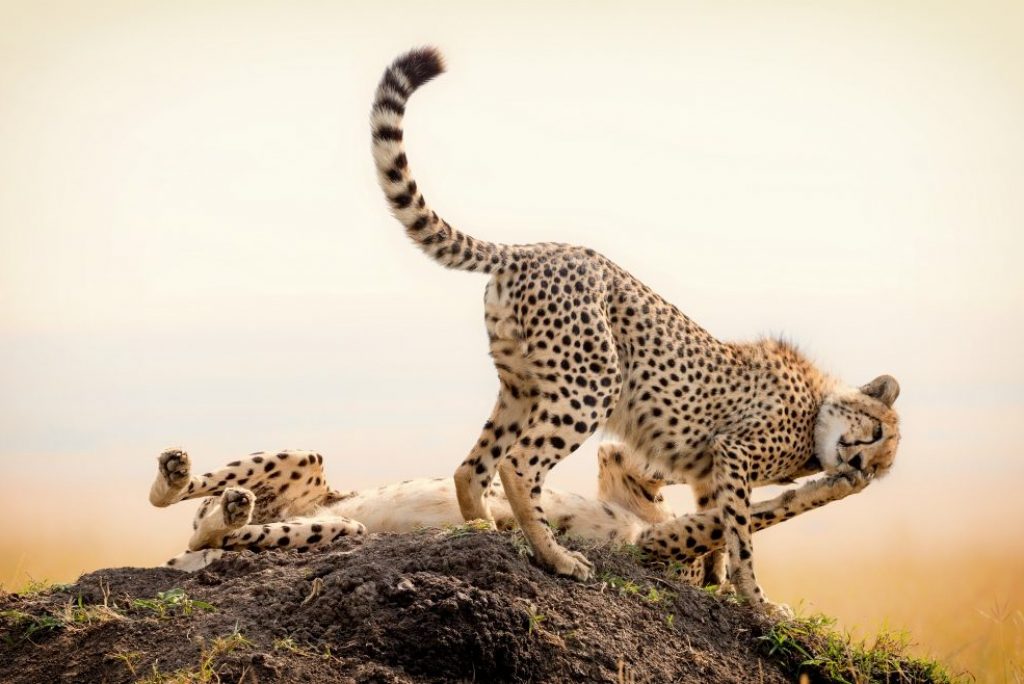
Three days into my latest safari in Kenya’s Maasai Mara National Reserve, I’d already enjoyed quite a show. I scored front-row seats to a sparring match between two Thomson’s gazelles clashing over territory, watched as a clan of hyenas played keep-away with a day-old wildebeest kill, and marvelled as a lilac-breasted roller landed amongst a cluster termites and feasted to its heart’s content.
But the Mara always delivers in spades, and it had another surprise in store. As the sun reached its zenith, we discovered a sprawl of golden-coated forms lying prone under the boughs of a blackwood. These shapes soon resolved into the unmistakable figures of five individual cheetahs. Cat rested upon cat; tails flicked and ears twitched; spots mingled together to weave a contiguous tapestry of tawny fur. Although they weren’t exactly living up to their reputation—in fact, they were reclined in various states of repose ranging from the simply indolent to the unequivocally comatose—there was no doubt about it: these cheetahs represented the Mara’s famous Fast Five coalition.
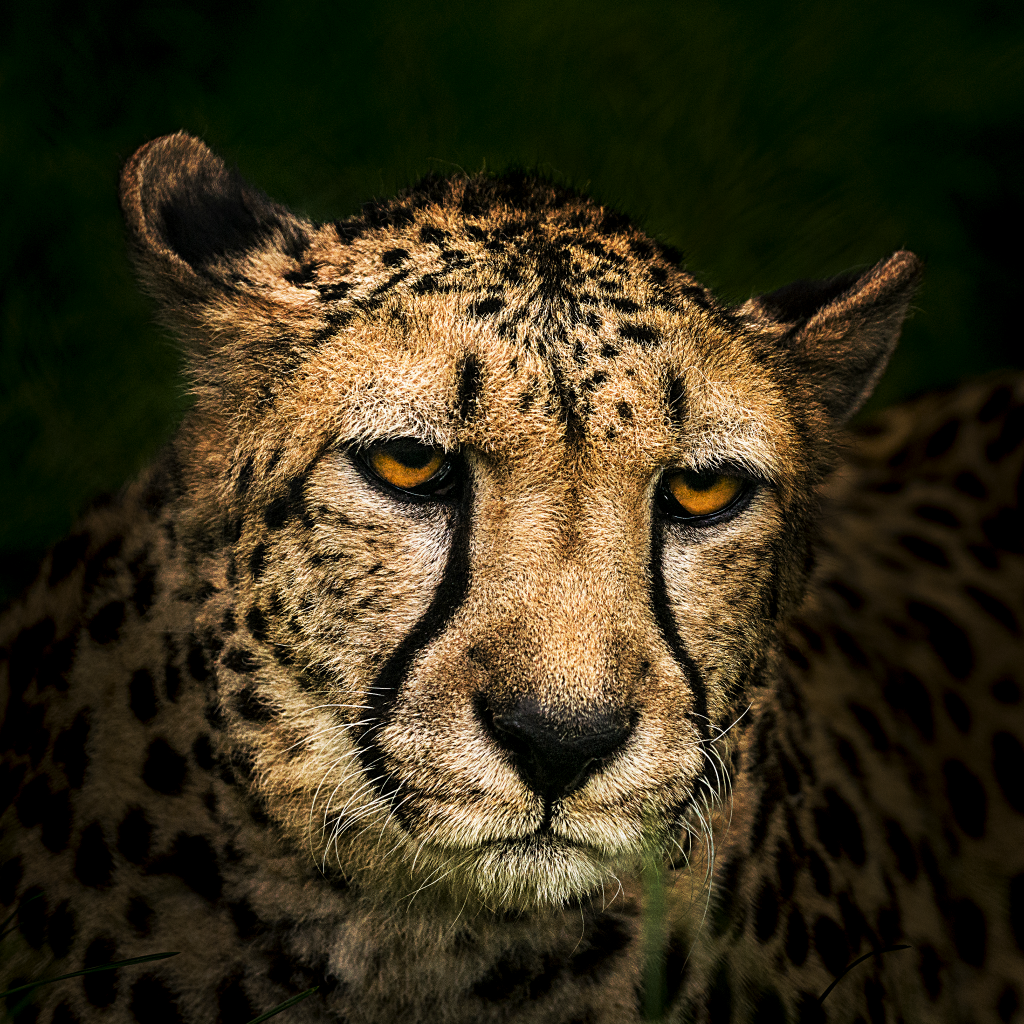
Lions are widely reputed to be the only truly social big cat, but you’d be forgiven for questioning the traditional wisdom of this sentiment after observing cheetahs in the field for any length of time. Spending the afternoon with the Fast Five, I certainly developed doubts of my own. I watched as one cheetah or another periodically roused itself, only to collapse into sleep next to another member of the coalition. The cats were seeking physical contact with each other: an unmistakable hallmark of social bonding. But why has this social behaviour of the cheetah gone under-reported?
Cheetahs are born into litters of about four cubs, which are raised by their mother. They learn to feed and hunt until reaching maturity after about 15 months. Then females begin a solitary lifestyle, until they have their own offspring. But while males may also strike out to pursue the lives of lone hunters, sometimes they stick together. And that’s where things get complicated.
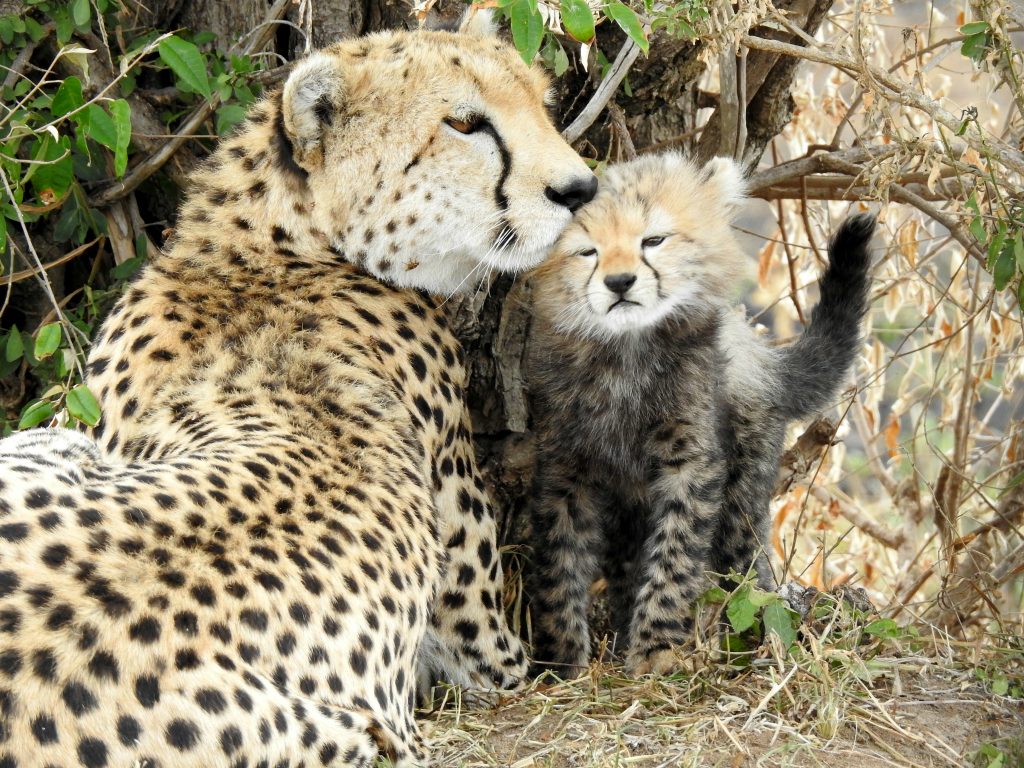
“Cheetah sociality is a very interesting and complex topic,” says Dr. Elena Chelysheva, project manager of the Mara-Meru Cheetah Project. This research organization studies cheetah populations in the Maasai Mara ecosystem and Meru Conservation Area. Chelysheva formed the project in 2011 and quickly became one of the foremost experts on Kenya’s fastest cats, establishing an exhaustive cheetah identification database and gathering data to ensure the species’ survival. Naturally, she was first on my list when I needed help understanding cheetah coalitions like the Fast Five.
Chelysheva published her latest findings about these nuanced social relationships in Swara, a quarterly magazine printed by the East African Wildlife Society. “I actually dedicated my article to the coalition of five males,” Chelysheva remarks. The Fast Five—or Tano Bora, as they’re locally known—have clearly made an impression on her. Distilling years of data collection, she shows how the coalition is led by two unrelated males which share the responsibilities of selecting prey, mitigating internal conflict, and directing movement across their territory. This form of leadership is specific to mixed coalitions; individual cats hold equal status in groups comprised entirely of siblings. But no matter who’s in charge, each cheetah benefits from being part of the coalition.
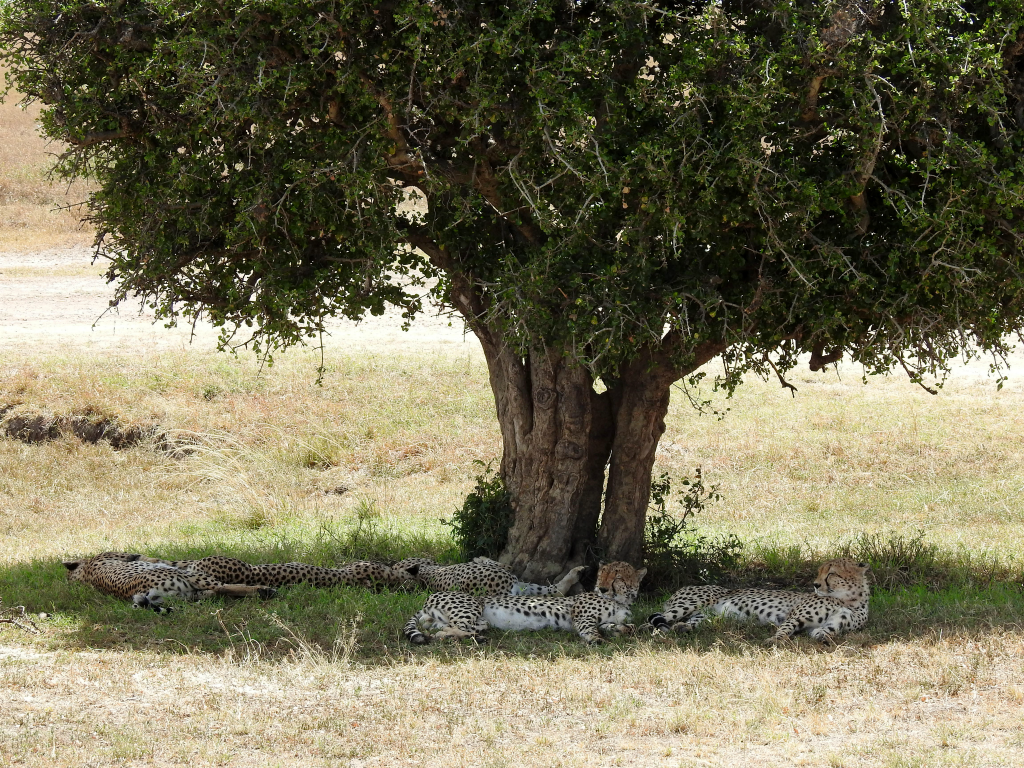
The most readily apparent advantage of male coalitions pertains to hunting. East African cheetahs are known to favor Thomson’s gazelle; this small antelope can be easily managed by most adults. But its diminutive size means that it doesn’t provide much food. That’s why cheetahs often fill out their diets with animals like hares and warthogs. But you shouldn’t expect to see a lone cheetah attempt a big-ticket meal like a zebra or adult wildebeest on its own: for that, even the sturdiest of these cats needs a little help.
“From my observations, males in coalitions do go after larger prey than single cheetahs or even mothers with single cubs,” explains Dr. Anne Hilborn. Hilborn earned her PhD studying cheetahs in Tanzania’s Serengeti National Park with the Serengeti Cheetah Project. Her research involved recording hunting behaviour, prey selection, and competition with other predators. “Especially when the wildebeest migration is occurring,” she says, “coalitions of two to three males will bring down large calves of yearling wildebeest frequently.” When large prey isn’t available, coalitions may split up into smaller groups to make multiple kills. This is a great strategy for supergroups like the Fast Five, but not all coalitions are created equally.
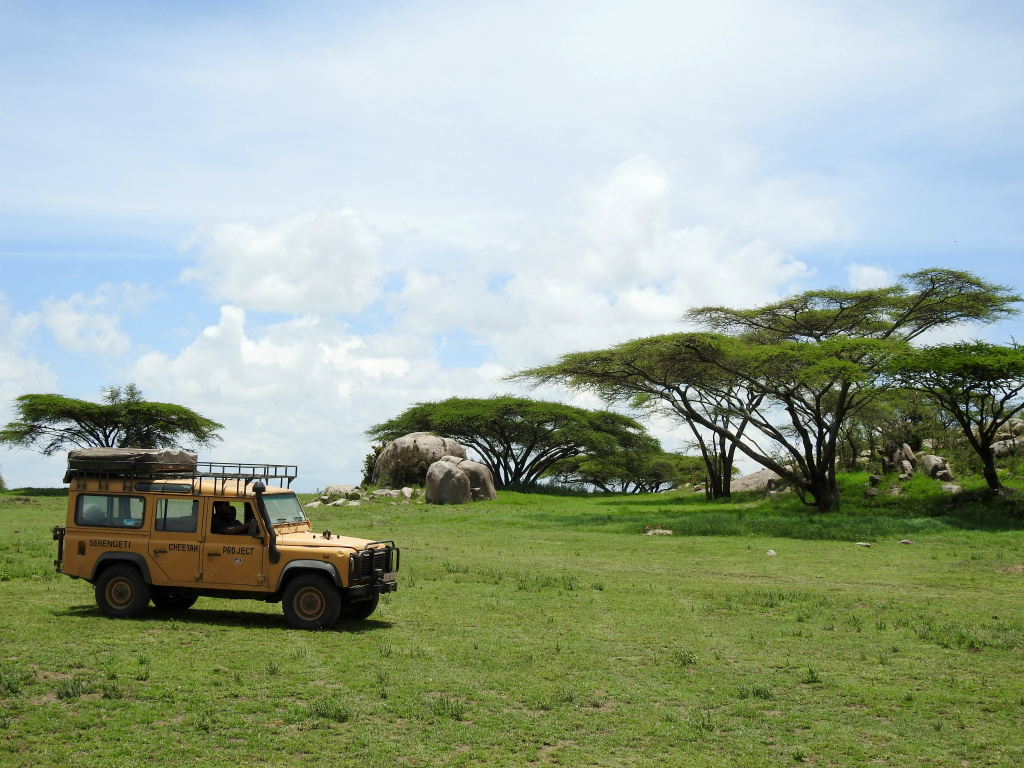
“During the time I worked in the Serengeti,” Hilborn recalls, “all of the coalitions we tracked were two to three individuals.” Larger-sized groups may be attributable to the availability of local resources or the number of male siblings in a litter. “What we often saw in the Serengeti are two single unrelated males joining up to form a coalition.” These smaller groups may not enjoy as many hunting advantages, but they do reap other rewards by functioning as part of a team.
Groups of cheetahs can remain more fully aware of their surroundings, helping each other to stay alert for other potentially dangerous predators. An injured cheetah can also rely on its coalition to obtain prey while it recovers. Chelysheva’s research in the Mara has even shown that cheetah coalitions can access preferential territory, choosing favourable terrain for hunting or areas more densely populated with prey. With strength in numbers, a coalition can also reduce competition from other cheetahs.
But Hilborn advises that holding more territory can’t be used as the sole benchmark of success. “Whether holding a territory leads to fathering more cubs, we still don’t know,” she cautions. More research is needed to answer these and other questions, like why some males join coalitions and others don’t. It’s fortunate that groups like the Fast Five remain accessible to researchers, exhibiting normal behaviour while under continuous observation.
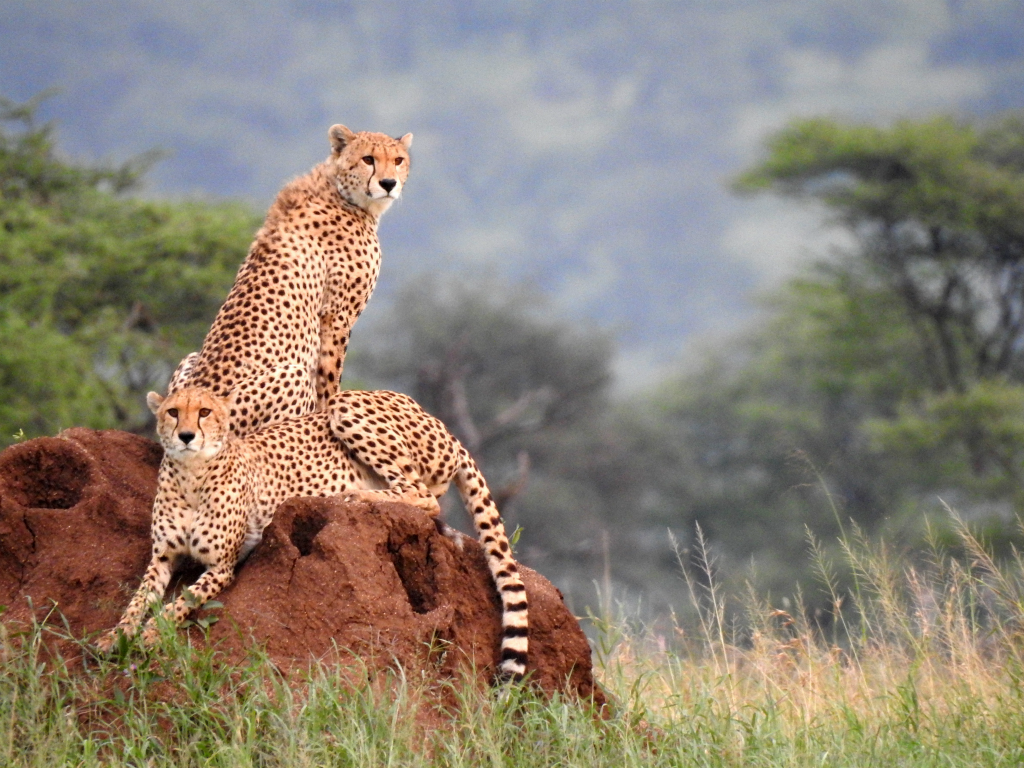
While the Fast Five is the most well-known cheetah coalition today, there are other examples of cooperation among these big cats. Social media has made it possible for anyone to track their favourite cheetahs, keeping up-to-date with online posts from the field. “There are several historical male coalitions who were famous within the Cheetah Project,” Hilborn says, “but at the time we didn’t have a way to share their stories with wide audiences.” Hilborn regrets that she couldn’t relate the sagas of former coalitions like Richard and Armitage or Bradley and Cooper.
But there’s a risk in following wild animals too closely. “Getting emotionally attached to male coalitions is tough,” she explains. “They don’t live very long and can disappear or die at any time. It can be tricky to build an audience online who is invested emotionally with your study animals, and then have to tell them that the individual they care about has disappeared.” So whether a large coalition like the Fast Five represents an enduring feature of the ecosystem or (more likely) a momentary flash in the pan, we should appreciate these manifestations of cheetah behavior while they last. They can teach us a lot about the species’ long-term prospects for survival—not to mention something essential about the nature of life itself in the African bush.
Our Top Experiences
SEEN SOMETHING YOU LIKE?
Enquire now and our team will create a custom itinerary tailored to your preferences.

CONTACT
enquiries@nomad.africa
Tel: +254 708 238 738
Purple Nomad Ltd
PO Box 69671 - 00400
Mwanzi Avenue, Nairobi, Kenya



